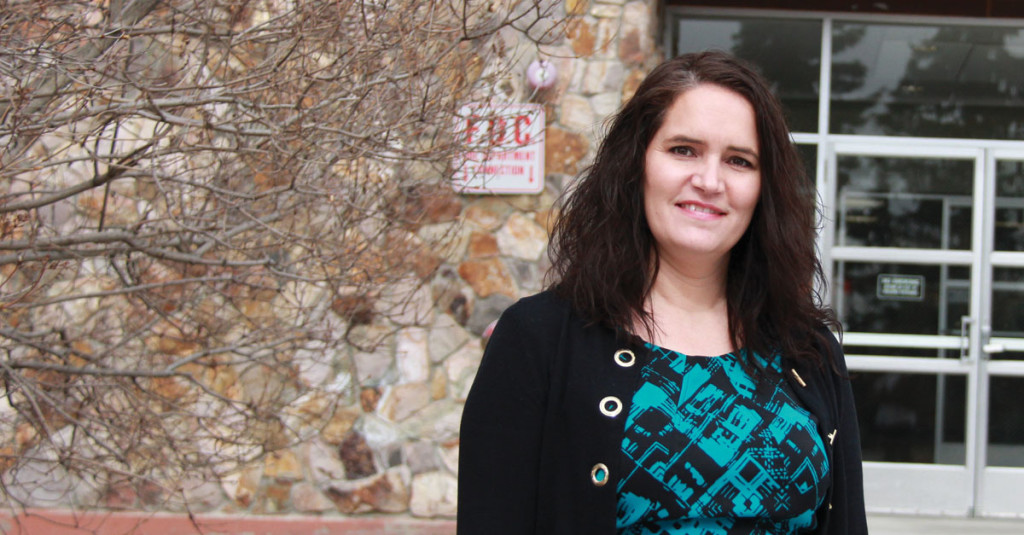In a 1998 LitSite Alaska article, “Growing up Native in Alaska,” a young Carrie Brown (class of 1994) is remarking on being the youngest person ever appointed to the Board of Toghetthele Corporation:
And there’s been sort of a — this is statewide — push to involve more young people and get them ready for when these other leaders are going to be moving on eventually. They can’t stay on there forever. Who’s going to take over when they leave?
Well, Carrie Brown, for one.
If you had shown me her resume before I met her, I would not have paired it with the easygoing gal who hugged me when we met for an interview over coffee at Kaladi’s. Oh, I know, I know. Very accomplished people, people who have gained a lot of professional ground relatively fast, like Brown, are often perfectly nice individuals.
But relaxed? Seemingly unimpressed with themselves? Curious about you, the person doing the interview? In my experience, the higher the individual has moved up the professional ladder, the more likely you are to see those cues, both subtle (glancing at watch) and not so subtle (“This isn’t going to take long, is it?”), that convey just exactly where they – versus you – stand in the human food chain.
My interview with Carrie Brown could not have been more unhurried and pleasant. It came about after she overheard an APU staffer talking to someone at an outside event about interviews APU was conducting with alumni. Brown volunteered that she was an APU graduate and would be happy to participate.
Of Athabascan, Inupiaq and Irish descent, Carrie Brown was born in Fort Wainwright, Alaska, and was raised in a mainly traditional, subsistence lifestyle in Nenana, a village of less than 600 people in Interior Alaska. After graduating from high school, she enrolled in the University of Hawaii. Brown’s initial plan was to have a career in international banking, which motivated her to spend first a year in Ngoya Gakuin University learning Japanese, and then to focus on learning Russian when she returned. Missing her home state, she transferred to Alaska Pacific University and graduated in 1994 with a degree in Management/International Business with a focus in Pacific Rim Studies.
An internship in international banking had made Brown realize, however, that this was not in fact what she wanted to do. In 1995, Brown secured a position as a Projects Assistant for Alaska Village Initiatives, where she was responsible for providing support for rural economic development projects, statewide. Soon after, she became Assistant Vice President of Operations.
“I’ve been interested in working for Alaska Native organizations ever since, particularly non-profits that focus on development opportunities,” Brown said.
In 2000, Brown became the Business and Administrative Officer for Telemedicine/Telehealth for the Alaska Native Tribal Health Consortium (ANTHC), where she was responsible for all administrative functions for roll-out of the telemedicine/telehealth program and the equipment in over 200 locations. In her next position, Brown served as Senior Vice President and Chief Administrative Officer of First Alaskans Institute, a non-profit that helps develop social, economic and educational capacities of Alaska Native peoples and communities. In 2001, she was recognized as one of the Anchorage Chamber of Commerce’s “Top 40 Under 40” (no surprise there) and in 2005, Brown became the Executive Director of The Alaska Native Arts Foundation, a charitable organization that promotes and markets Alaska Native artwork and artists throughout the country.
In 2009, Brown returned to ANTHC as the Director of the Healthy Alaska Natives Foundation, which is the charitable arm of ANTHC created in 2007 to develop philanthropic relationships and a broad base of funding for the Alaska Native Medical Center and for all the wellness, prevention and healthy village programs of ANTHC.
“In my current position, I can see directly the impact of fund-raising on patient care. This is very rewarding work,” she noted.
Carrie is on the Operations Board of the Foraker Group and the Board of the Alaska Chapter of the Association of Fundraising Professionals. In the past, she’s served on the Board of the Alaska Center for the Blind and Visually Impaired and on the Community Advisory Board of Koahnic Broadcast Corporation, the only Native-owned and operated radio station in Alaska.
So what role had APU played in the success of this self-possessed young woman sitting in front of me? She turned thoughtful when I asked her about this.
“APU knows about you and where you’re coming from,” she said. “They gave me real support and a sense of community. As someone from a rural community, the faculty gave me the confidence to go out into the world with my degree and do something with it.”
I had to smile at that. It’s hard to imagine faculty needing to do much more than simply getting out of Carrie’s way.

